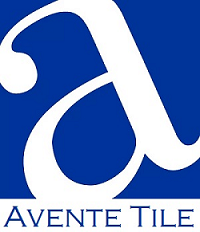Creating Custom Cement Tile Patterns
Posted by William Buyok on
Curious what it takes to create a custom cement tile pattern? See how you can use ancient patterns and mosaics for inspiration to create a new pattern for cement tile. Once you have the concept for the cement tile pattern or design, Avente Tile can provide expert design modeling and concepts for the pattern. Or, we can provide layout services to ensure the pattern is installed perfectly!
One of the best places to look for design inspiration is history. History and design repeat themselves. Roman and Greek architecture, with its classical geometry, is a wonderful place to draw inspiration for design and pattern. Take a tour of the Fishborne Roman Palace in Sussex, England. Then see how these ancient patterns still have a place in modern life and can be easily adapted to create custom cement tile patterns.
Unlike the Roman rulers, most of us do not have the time or means to have elaborate tile mosaics fashioned for our floors. However, all is not lost. While the cost of replicating an ancient mosaics may be beyond our financial means, we can still enjoy the patterns on our own floors. Patterns from antiquity can be adapted to cement tile. The biggest obstacle will be time. Once the mold is created for each pattern, the tiles can be fabricated in any colorway.
Typically, cement tile comes in 8" x 8" and 10" x 10" sizes. To recreate the old patterns, on tiles of this size, the first step is to identify repetition in the original pattern.
In this first example, the simple geometric pattern of a Fishborne floor has been reproduced in a single tile that works well in a repeating pattern. The colors in the reproduced pattern were chosen from the Heritage Cement Tile Color Palette.
A single cement tile replaces hundreds of tessera in a design. In the following adaptation, the pattern was inspired by the first century mosaic in the west wing of Fishborne Roman Palace. The floor was re-buried to protect it. The original was created using black and white tessera.
This guilloche border pattern is adapted from a circular design, necessitating the creation of a corner pattern to create a square frame.
In this final design, for this article, the pattern requires two tiles. It is similar to the running edge design at the top of this post. It took several attempts to adapt the pattern and, in its current form, there are limitations on how the design can be used. The design was inspired by a floor at Bignor Roman Villa, but similar patterns can be found in other places.
Which pattern and color palette inspires you to create your personal design? The possibilities are limitless and the effect is truly personal. Need help crafting your unique vision? Let us know. We can provide excellent rendering and visualization design services from concept to installation.







